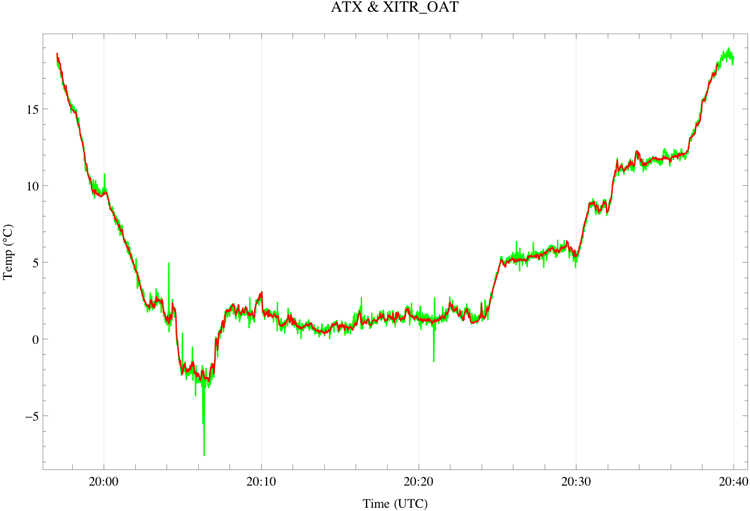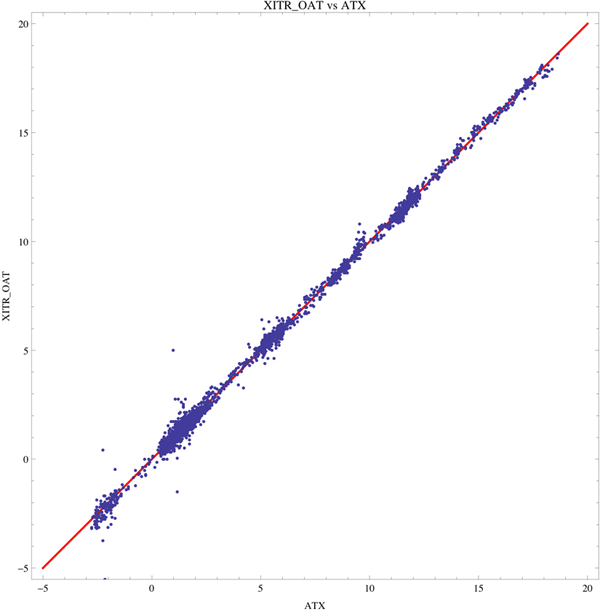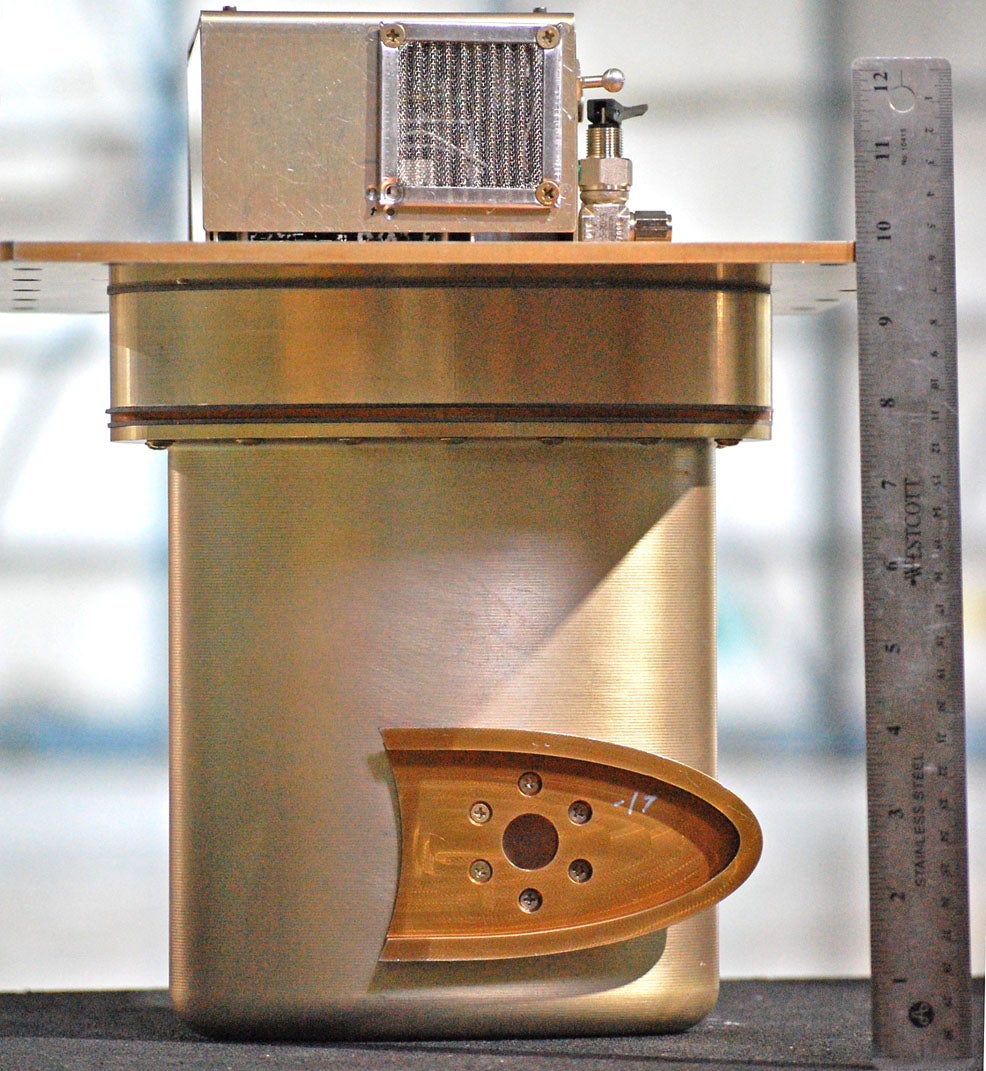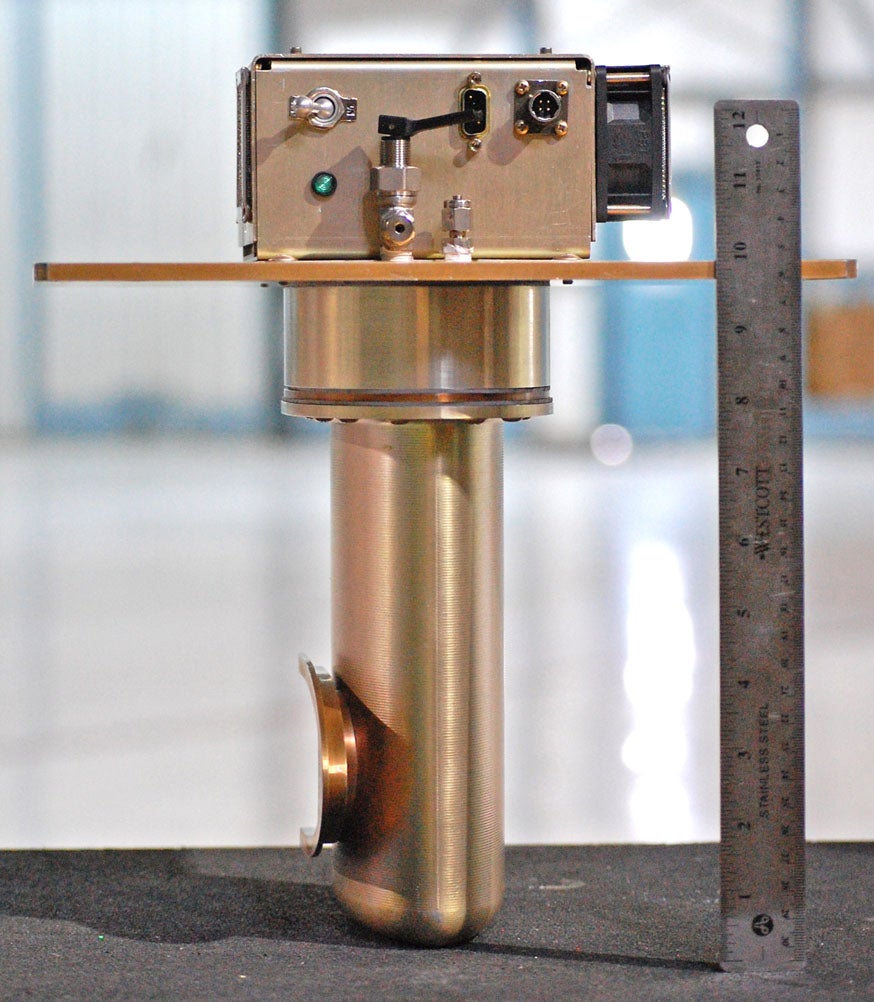In-Cloud Air Temperature Radiometer
Short Name or Variable Name
ITR
Measures air temperature by comparing air radiance in the carbon dioxide 4.3 µm band with a reference blackbody at near-ambient temperature. It is generally unaffected by wetting caused by passes through wet clouds so the main use is in clouds and transitions between clouds and clear air when the Rosemount sensors are affected by wetting or evaporation.
Measurements Provided: Radiometric ambient air temperature
Typical Sampling Rates: 10 samples per second
Measurement Characteristics:
- Overall estimate of uncertainty: Approximately 0.3° C
- Response time: 0.1 second
- Precision: 0.2° C, 1 second average
- The radiance received by the radiometer consists of the radiance of the air parcel extending away from the aircraft with an exponentially-decreasing weighting function. The effective averaging distance is dependent on air density and water droplets. In clouds, the radiance beyond a few tens of meters is negligible, whereas in clear air at high altitude the radiometer is still slightly sensitive to air temperature hundreds of meters distant. The radiometer is mounted so that it looks horizontally where there is the least temperature gradient. When the aircraft rolls in a turn there is typically a shift in the reported temperature as it looks up or down toward cooler or warmer air. Likewise, when the radiometer looks directly into the sun the reported temperature increases about 20° C, and is worse at higher altitudes when the suns 4.3 µm radiance is less completely absorbed by atmospheric carbon dioxide.


Calibration Methods
The calibration is a 3 component linear least-squares fit to the aircraft reference temperature ATX. The fit coefficients consist of the detector signal, the blackbody temperature, and an internal optics bench temperature.
Lead Contact
Patrick Veres
Typical Sampling Rates
10 samples per second

